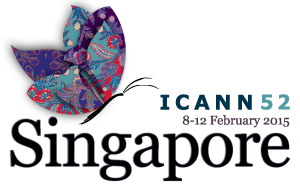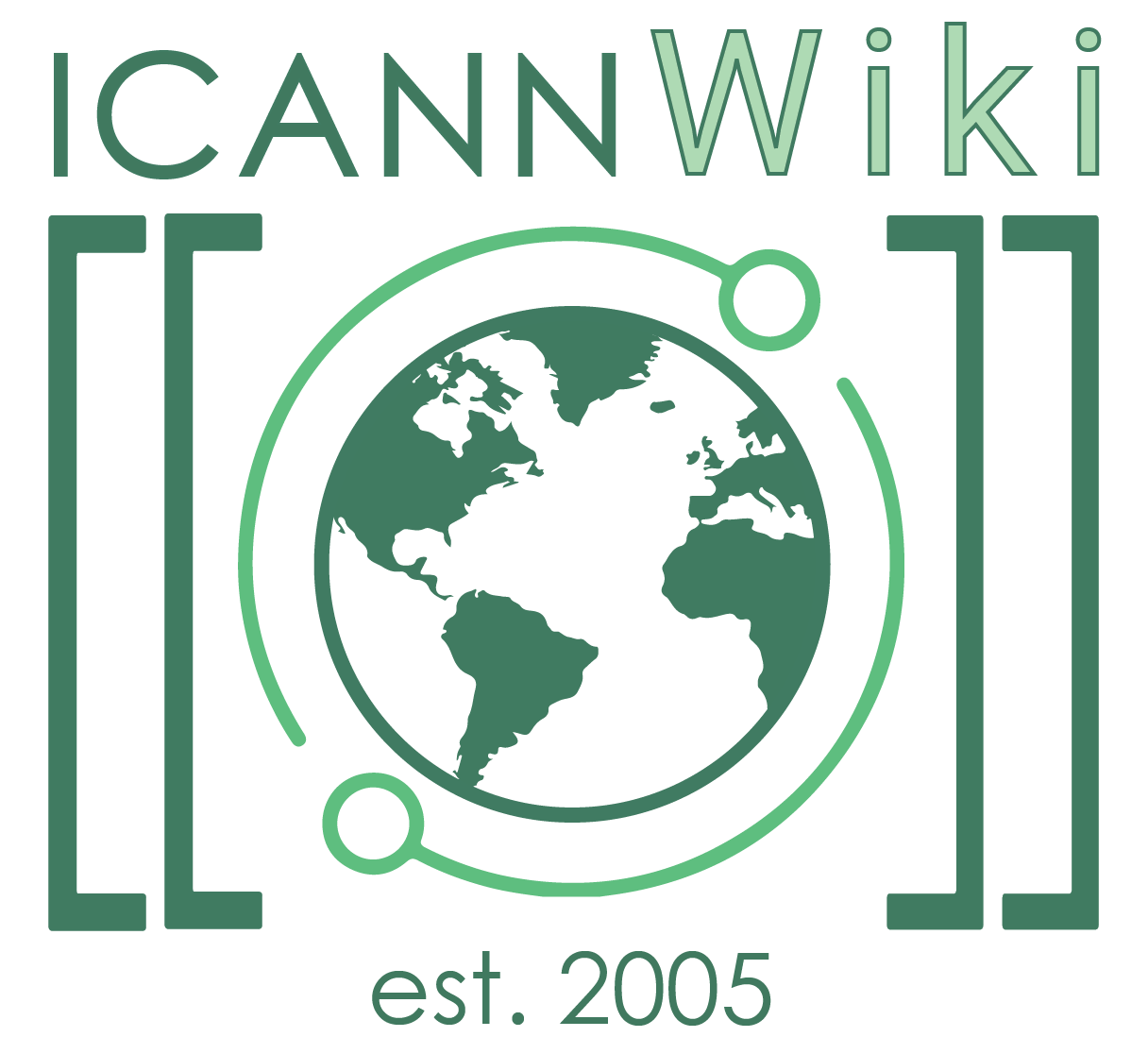ICANN 52
| Event | |
|---|---|

| |
| Process | ICANN |
| Date | Feb. 8, 2015 – Feb. 12, 2015 |
| Region | AP |
| Country |
|
| City | Singapore |
| Venue | The Raffles City Convention Center |
| Websites | |
ICANN 52 - Singapore was an ICANN Meeting that was held from the 8th to the 12th of February 2015 in Singapore, Singapore.
ICANN 52 was the fourth ICANN Meeting in the organization's history to be held in Singapore. Previous meetings held in Singapore were ICANN 1, ICANN 41 and ICANN 49.
Major Events and Topics[edit | edit source]
Opening Ceremony[edit | edit source]
ICANN Board Chairman Steve Crocker made the ceremony's opening statements, addressing the revised meeting schedule, which will begin in 2016 and include a shorter second meeting focused on policy development by ICANN's Supporting Organizations. Crocker also mentioned ICANN's continued focus on the impending IANA stewardship transition. Chairman Crocker concluded by touching on issues of "security, stability and resiliency," mentioning recent security breaches at Sony and spearfishing attacks against ICANN. The Chairman emphasized ICANN's role in Internet security, including the organization's expansion and curation of the L-Root, which diminishes the possibility of interference in this essential structural container. [1]
Dr. Yaacob Ibrahim, Singapore's newest Minister of Communications and Information spoke next. Minister Ibrahim discussed the rapid increase of global Internet users, specifically Singapore's growth as an international hub for technological growth. Citing Singapore's Smart Nation Initiative, Ibrahim elaborated on the nation's plan to secure quick national broadband that promotes innovation with a continued focus on safety and security for users. He concluded by discussing Singapore's recent development of a Cyber Security Agency that will take a holistic approach to cyber security, including but not limited to collaboration with neighboring countries in the wake of cross-country cyber incidents.
Former Chief Internet Policy Advisor, Ira Magaziner followed Minister Ibrahim and opened with a brief history of ICANN's development. The latter half of Magaziner's opening statements mirror those he made at ICANN 40. These sentiments include:
- The development of the Internet and electronic commerce should be handled by the private sector.
- Governments should avoid imposing undue restrictions on the Internet & electronic commerce.
- If needed, government support should be minimal, predictable, simple and consistent with the legal environment for electronic commerce.
- Governments should recognize the unique qualities of the Internet.
- The Internet and electronic commerce should be handled on a global basis.
Board Chair Steve Crocker then introduced Byron Holland, president and CEO of the Canadian Internet Registration Authority (CIRA) and current Chair of ICANN's ccNSO. Holland began by summarizing the development of the Internet and the creation of ccNSOs, specifically the creation of .ca. Holland drew parallels between the formation of CIRA and the activities of ccNSO within ICANN, underlining the importance national, versus private or personal needs when meeting as a group. Holland then described the ccNSO as largely heterogeneous, consensus-driven and motivated to exchange ideas and best practices as opposed to creating hard-line binding rules and legislation. He concluded by outlining the ccNSO's current aims, namely to complete its work with ICANN's GAC in creating its Framework of Interpretation. This document refines the ccNSO's relationship to ICANN, namely its possibilities and limitations.
Chair of the GNSO, Jonathan Robinson spoke next on the critical functions and goals of the GNSO. Robinson explained that the GNSO oversees and implements most domain name policy, thereby seeing the entire life cycle of a policy. The GNSO functions in a distributed and bottom-up manner. Robinson described distributed as a process in which "much of the work takes place in the constituencies and stakeholder groups."
Currently, this group is concerned with the successful interaction between cross-community working groups, domain name policy (including rules for proxy and privacy services), and domain data. Lastly, the GNSO works toward early engagement with ICANN's GAC in order to ensure a more refined policy development process by answering all questions and objections that are raised.
Paul Wilson, the Director General of APNIC (Asia Pacific Network Information Centre) spoke next on behalf of the collective of the five RIRs (Regional Internet Registry) and its umbrella organization, NRO (Number Resource Organization). Wilson centered his talk around the work of the NRO, providing an outline of their work and its processes. Firstly, the NRO maintains the health of network operations, ensuring that network infrastructure runs smoothly. Secondly, the group focuses on policy development on the regional as well as global level. Global policy development (performed alongside the ASO (Address Supporting Organization) processes inevitably impact IANA, while regional development impacts its own RIRs and their functions.
Wilson went on to make a technical point about the recent exhaustion of IPV4 in three regions of the world, and mentioned of the upcoming exhaustion in North America. He then went on to describe the success of IPV6, stating that Google so far has seen nearly 6% of all their traffic come through IPV6.
Session Highlights[edit | edit source]
Sunday, 8 February
Monday, 9 February
- Responses to the ICG RFP regarding the IANA Stewardship Transition
- Tech Day
Tuesday, 10 February
Wednesday, 11 February
Thursday, 12 February
- CCWG Accountability Working Session
- Fellowship Week Wrap-up
- ICANN 52 Wrap-up cocktails
Sponsors[edit | edit source]
- Gold: Verisign
- Silver: Uniregistry, NCCGroup, CentralNic, Afilias, PIR, ZDNS, LogicBoxes
- Bronze: Minds + Machines, Iron Mountain, ION Magazine
Links[edit | edit source]
Video Interviews[edit | edit source]
References[edit | edit source]
- ↑ ICANN SingaporeICANN.org Retrieved 18 February 2015
ICANNWiki resources: Special Pages | Content Guide | Documentation | Development || Maintenance: Articles needing attention | Candidates for deletion || Projects: Internet & Digital Governance Library
